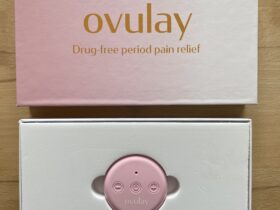You’re ready for a wearable, whether it’s a fitness tracker to help you count your steps, or a heart rate monitor, or a sleep monitor, or a device to show you notifications from your phone.
You’ve probably heard of an Apple watch or a FitBit. But what about some of the lesser known brands which are much less expensive? Should you save up or buy a less expensive version?
Apple Watch versus… all the others
The Apple Watch definitely does it all, and the price tag reflects that. But maybe you don’t need it all. So the first question to ask yourself is what do you need? Here are some of the things you might want from a smart wearable:
- Fitness Tracking (Steps, Biking, Swimming)
- Sleep tracking
- Notifications from your phone (texts, emails, social media)
- Heart rate monitoring
- Answer phone calls
- Send messages
- Contactless payment
- Listening to music
This might sound like a lot of great features, and it is – but what do you actually need? If it’s just a fitness tracker, or notifications, then there are plenty of options which are much more affordable.
Furthermore, you might not have an iPhone (this writer doesn’t!) and therefore, the Apple watch might not be the best choice for you – read on, we’ll cover connectivity below.
What to look for:
It’s hard to know what to look for when you find a good deall. So we’ve created a list of six things to look for when considering a more affordable wearable.
1. Accuracy
Heart rate tracking is increasingly popular, even in more budget models of smart fitness trackers. There are many factors which determine if a smartwatch will accurately record heart rate, everything from how much hair you have on your arm, to how sweaty you become when exercising, to how loose or tight the band is.
One of the main things to think about is that while you might be able to get your heart rate, heart rate variability, or SPO2 (blood oxygen) levels reported from your smartwatch, your calorie count is rarely going to be accurate. So it’s best not to rely on this as a fitness factor.
This study tested 7 devices with 60 people and found that while heart rate was fairly accurate on most devices, energy expenditure was not.
If you’re looking for a wearable to help you measure heart rate from a medical standpoint, you might want to check out those which are medically certified.
This article presents 8 smartwatches which are FDA approved for measuring your heart rate.
2. Connectivity
Do you have an iPhone, or an Android? (You most likely have an Android if you do not have an iPhone – it’s also commonly branded under Samsung, for example). Making sure that you can use your smartwatch is a huge factor in which smartwatch to buy.
Most smartwatches work with both platforms (iPhone and Android) but some are only developed for iPhone (because it’s easier to make apps for this) and some do make an Android app but then it’s not very well made, and frustrating to use.
So one important factor is to do a quick search online and find out if the smartwatch you are considering buying, will work well with your phone.
For example, you might try doing a Google search for “Fitness Versa Lite on Samsung Galaxy 10” and you may find a video showing you how to connect, or a frustrated person explaining how it’s difficult to connect, or someone saying it works fine.
You can also check the Google Play store App for the device you are considering and read reviews to ensure it works. Some of the device manufacturers are very help and have a page where they tell you which devices work, and which do not, such as FitBit’s page
3. Setup
Setup shouldn’t be difficult! You want something that just works and doesn’t require extensive work to get started with. Here, the better known brands such as FitBit, Garmin, Samsung, etc have a well established connection process that’s easy to follow.
If you find yourself confused (as I often do!) when trying a new smart watch, try going to YouTube and searching for the name of your device plus the word “Setup” – some nice person has probably made a tutorial for you. For example, if I just bought a Michael Kors smartwatch, I would search for: “michael kors smartwatch setup” and then a bunch of videos will come up.
You might have to be more specific, such as the model type, in this case “Runway”, “Sofie” etc – but it’s likely that the setup process is similar across the models. So pick a video, try it out and if it doesn’t work, try another.
The manufacturer should also have a link to their setup guide, which is sometimes a QR code in the instruction manual. Failing that, return to Google (or your search engine of choice) to find out how to set it up.
For this example, I typed in: “michael kors smartwatch setup” and clicked on the Michael Kors link where they have a whole YouTube page dedicated to their products.
4. Battery LIfe
You want a device that at least lasts you through the day – devices with large screens will drain the battery. Many smartwatches will last 5 – 10 days depending on their screen size and how often you interact with it (pressing buttons or checking it).
Check out how long the battery lasts, again on the product itself or in reviews you can read online. Battery life will depend on what you’re using it for.
If you’re wearing it as a step counter then it will likely last a long time. If you’re using it to scroll through graphs or maps if you’re a trail runner and using GPS, it will not last as long.
5. Design
You might be thinking, I don’t care! I just want something to track my steps. This is fine – but be aware of materials.
You want to think about if you want a rubber strap, or a fabric one and how it might react against your skin, especially if you’re sweating when exercising. Some of the very cheap fitness trackers have straps which just fall apart or crack after a few weeks because they are plastic.
Do you want it to be fashionable or practical, or both? Does it need to be waterproof? Do you want to avoid taking it off every time you shower? You’ll want to look for something called “IP68” which means it can handle water up to 1.5m, in other words, you can swim with it. (Here’s a great article explaining this).
And it’s important to consider the screen. Some screens have a very small font size; some are not that visible in the sunlight because they’re quite reflective; some are always lighting up which makes it awkward if you want to sleep or go to a movie; some don’t have any text on the screen at all, but rather have an indication of progress, such as how close are you to achieving your 10,000 daily steps (my favourite here is the Withings Move which is elegant and discreet in this information displays).
6. Support and sustainability
When buying a new smart wearable, two things are important to consider, will this product be around in 5 years, and will I want to wear it in 5 years?
Definitely check out our article about how to choose your wearable, where we ask “Will this be something I treasure?”.
This addresses the sustainability aspect, as in, will you keep it? For the other aspect, many cheap knock-off brands tend not to exist after a year or two, or from the start, their support is not great.
Maybe there won’t be any updates for the product; maybe it’s hard to find help with your product, maybe the app might be a terrible experience, and maybe there’s little to no community.
So it’s important to do a bit of digging and find out who, if anyone is using this wearable and if it’s worth investing in.
Remember these points:
- What do you plan to use this wearable for? (Again, read this article to find out).
- Is it for a medical or health purpose and do you prioritize accuracy?
- How important is it for you to have updates? (This author would argue that it’s important for any wearable since this is the difference between keeping a wearable and giving up on it!)
- How important is a community of other users?
- How much do you care about the app experience? (Do you just want to see how many steps you walked?)
- What kind of material do you want against your skin, and how will you be using it?
Hopefully these questions will help you to choose a wearable which suits your needs.
Check out this article, which discusses the best cheap smart watches in 2021, and try to think about if this is something you will treasure, or will just end up in a kitchen drawer after a few months. Quality and experience matter.













Leave a Reply